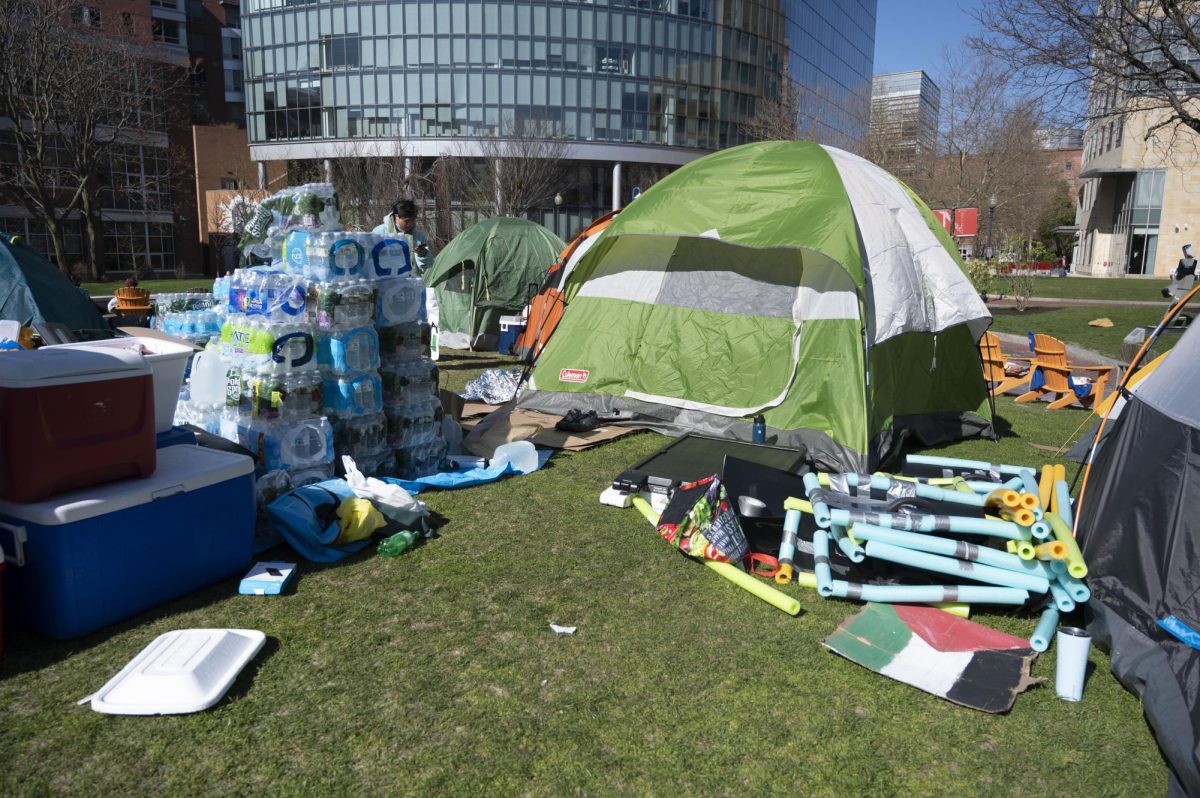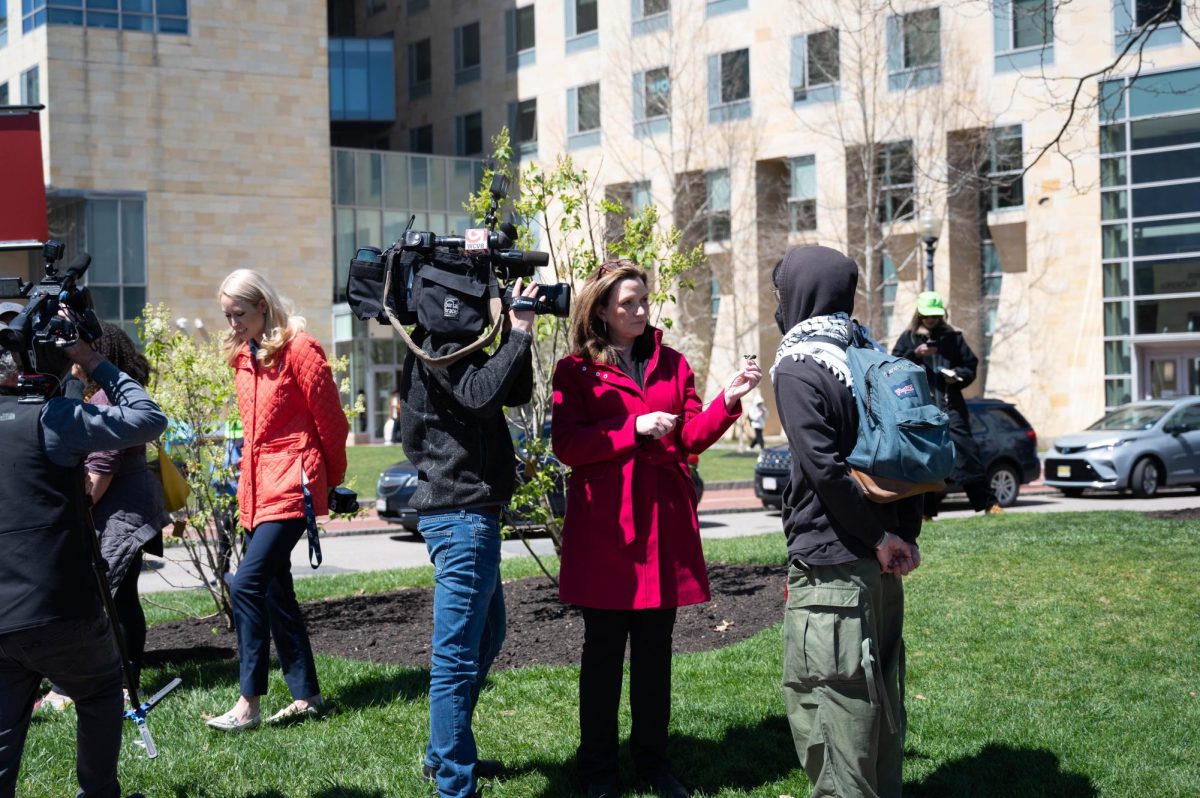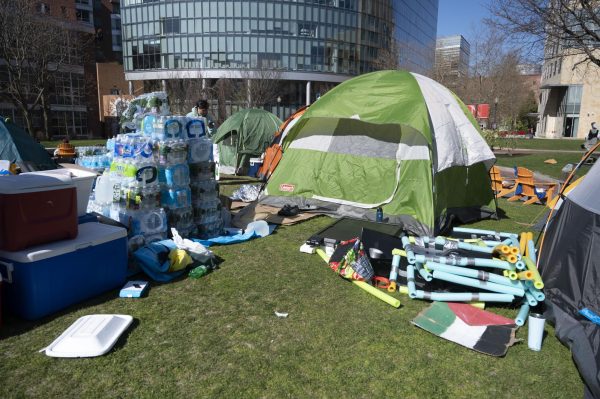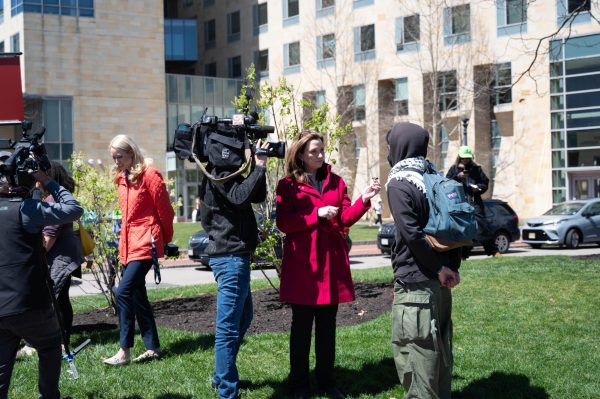America’s college town prepares for students’ return in age of COVID-19
August 27, 2020
Graphic by: Avery Bleichfeld
The News analyzed the reopening plans of 31 colleges and universities in the Greater Boston area. Scroll over a dot to see that schools plans to bring students back — or to keep them away — during the COVID-19 pandemic.
Many colleges nationwide faced a large decision regarding their fall semester: online or hybrid learning systems. Boston, known as America’s college town, houses about 50 institutions of higher education. The News analyzed 31 colleges surrounding Northeastern and throughout the city, nearly all of which have at least 1,000 students.
With the exception of six schools, most colleges in the area are implementing a hybrid system with a mix of in-person and online classes, varying with each school and class. This could mean one course is fully online throughout the semester while others are not. Certain classes, especially labs and art studio courses, may be in-person because they simply cannot be facilitated online without greatly diminishing the learning experience.
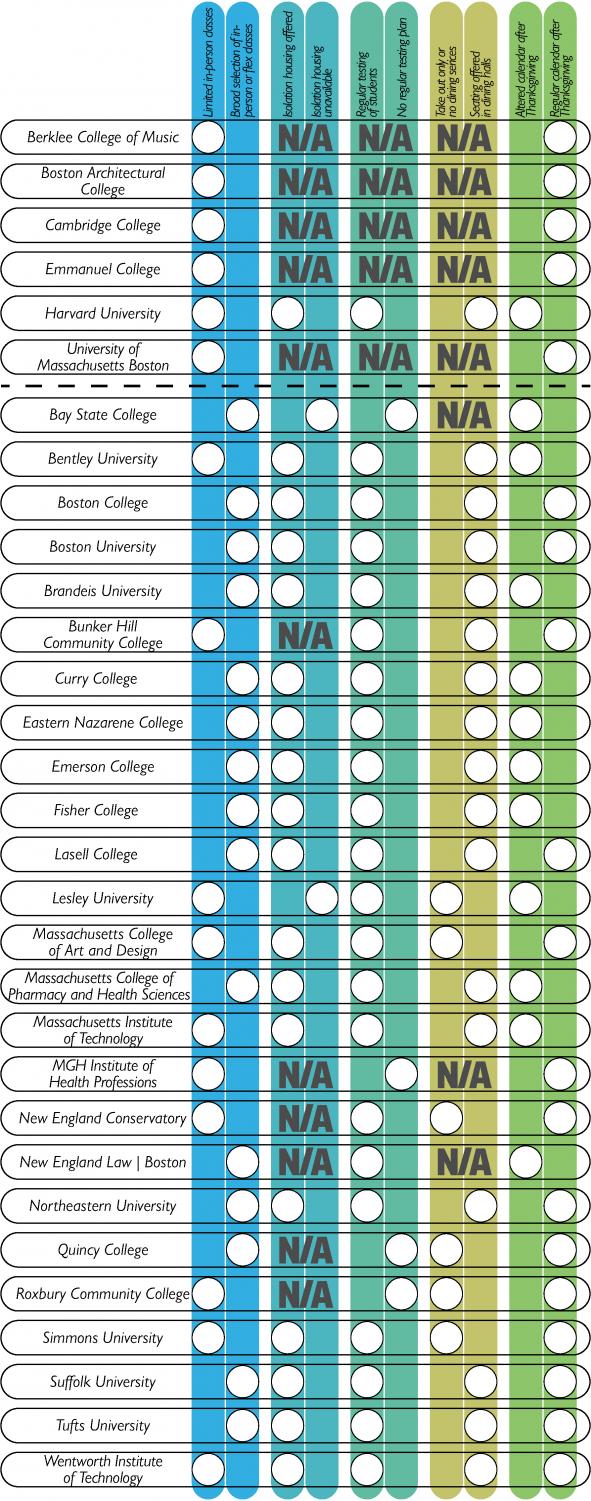
Each school’s plan for the five categories are marked with a dot. For schools offering no dining or housing, the isolation housing or dining categories are mtarked as N/A. For schools operating completely online, the testing category is marked with N/A.
About 38 percent of schools, unlike Northeastern, are mandating all classes and exams to be fully online after Thanksgiving break, rather than having students return to campus once again. Others decided to end the fall semester by Thanksgiving break.
All but four schools with a campus presence have a periodic testing schedule, most commonly on a weekly or semiweekly basis. Ninety percent of schools that offer housing in the fall have also set aside isolation housing for students who test positive for COVID-19. Others are housing all students in single rooms, negating the need for separate isolation housing. Some schools have distinct plans for quarantine housing for students who are exposed to a close contact who tests positive.
Universities are also revising their dining services to have takeout options, with limited in-person seating still offered. Six institutions, of 23 that normally offer some form of dining service, are either removing all dining options or solely offering takeout. Some dining plans, such as for Bunker Hill Community College and Fisher College, are subject to change based on state or local regulations for restaurants.
Sixteen university presidents across the Boston area, including President Joseph E. Aoun of Northeastern, convened in a meeting prior to the fall semester to discuss their plans and work with the Federal Emergency Management Agency and 108 other federal agencies.
“So if there is any challenge, any issue, the hope is for universities to not go at it alone, but coordinate their activities, their responses,” Aoun said regarding the meeting.
But, there is opposition coming from the local community. Boston City Councilor Kenzie Bok, in an Aug. 3 letter, called for Northeastern and Boston University to switch to all-virtual teaching for the fall semester.
“No large city in America has the same scale of population swing as Boston in late August and early September. In this season of pandemic, that pattern poses a unique risk,” Bok wrote in the letter. “… The best ‘harm reduction’ strategy at this juncture is simply not to encourage your far-flung student bodies to return to Boston.”


